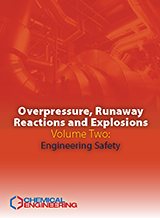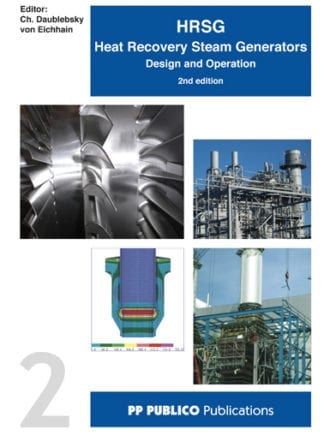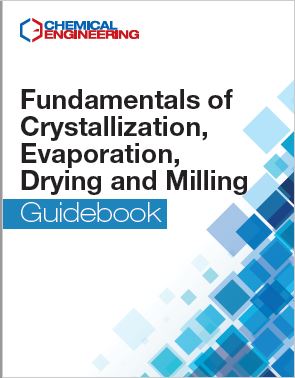Description
This Chemical Engineering guidebook contains practical, how-to engineering articles, as well as guide sheets from Chemical Engineering’s popular “Facts at Your Fingertips” department.
The topics included in this volume focus on a variety of engineering situations that can lead to dangerous pressure rise, upset plant conditions, runaway reactions and increased risk of explosive situations.
Several articles provide engineering recommendations for carrying a process hazards analysis. Others focus on the safe operation of pressure vessels, troubleshooting of heat-transfer tubes (to reduce the risk of rupture), and the safe storage of sulfuric acid.
Several tutorial-style articles provide safety-related recommendations related to vacuum systems, pneumatic transfer systems, compressed gas cylinders and flares. Tips are provided for the proper use of rupture disks and gaskets.
This guidebook is available in PDF format, 133 pages.
Table of Contents:
Control Valves: An Evolution In Design
Understanding the design features of globe-style control valves can help in selection for specific applications
Advanced Control Methods for Combustion
Advanced control techniques can raise efficiency and lower pollutant emissions in industrial combustion. The capabilities and adoption of several methods are discussed
Engineering for Plant Safety
Early process-hazards analyses can lead to potential cost savings in project and plant operations
Using Rupture Disks with Pressure Relief Valves
Troubleshooting Field Failures of Rupture Disks
Understanding why rupture disks fail can help ensure that they don’t
Managing Pressure while Pigging an Oil Pipeline
Pressure control valves can manage pressure in oil pipelines, but pigging the line presents a challenge
Evaluating and Reducing the Risks Of Pneumatic Pressure Testing
In applications where pressure testing with liquids is undesirable, the risks of pneumatic pressure testing of pipes and vessels must be evaluated and minimized
Evaluate Heat-Exchanger Tube-Rupture Scenarios Using Dynamic Simulation
Applying dynamic simulation models to tube-rupture scenarios can help ensure more accurate sizing and hazard assessment
Pressure Relief Requirement During External Pool-Fire Contingency
A practical overview of the important factors that need to be considered when designing a pressure relief system
Pressure-Vessel Quality Control Requirements
Understanding what is required for boiler and pressure-vessel manufacturers can help scheduling and cost assessments
Overpressure Protection: Consider Low Temperature Effects in Design
Understanding the inherent limitations of current overpressure-protection analyses is key to developing a more robust heuristic
Control Valve Selection: True Cost Savings Are Available
Control valves must respond quickly and accurately in a variety of process conditions. Selecting the proper equipment enhances process economics, safety and efficiency
Decoding Pressure Vessel Design
Bridging the gap between users’ and manufacturers’ responsibilities for the ASME pressure vessel code
Vapor Depressurization: Concept and Implementation
When carrying out depressurization calculations, special attention is needed for critical equipment and systems such as rotating equipment, columns and reactors
Piping-System Leak Detection and Monitoring for the CPI
Eliminating the potential for leaks is an integral part of the design process that takes place at the very onset of facility design
Flare-Gas Recovery Methods for Olefin Plants
Adding flare-gas recovery units at strategic locations of an olefin plant can not only reduces emissions, but will save money as well
Piping Design for Potentially Lethal Chemicals
Integrity and reliability are critical for piping and equipment that handle chemicals with extreme health hazards
Safety in Sulfuric Acid Storage Tanks
Commonly used in the CPI, sulfuric acid requires many special precautions to ensure its safe handling and storage
Compressed Gases: Managing Cylinders Safely
Follow these recommendations to ensure the safe handling, storage and use of gas cylinders
Reduce Hazards in Process Vacuum Systems
Reduce explosion risks, and chemical and physical hazards, to ensure safer operation of vacuum pumps and related systems
Forces Acting on a Gasket
Optimizing Flare Operation Through Proper Design
Flare problems are often caused by the seal systems that are designed to control air ingress. Follow these troubleshooting guidelines to improve design and ensure safe, reliable flare operation
Process Hazards Analysis Methods
Vacuum Systems: Recommendations For Safe Operation
Follow this guidance to ensure that steam ejector systems, mechanical vacuum pumps and integrated vacuum systems are designed, operated and maintained to ensure process safety




